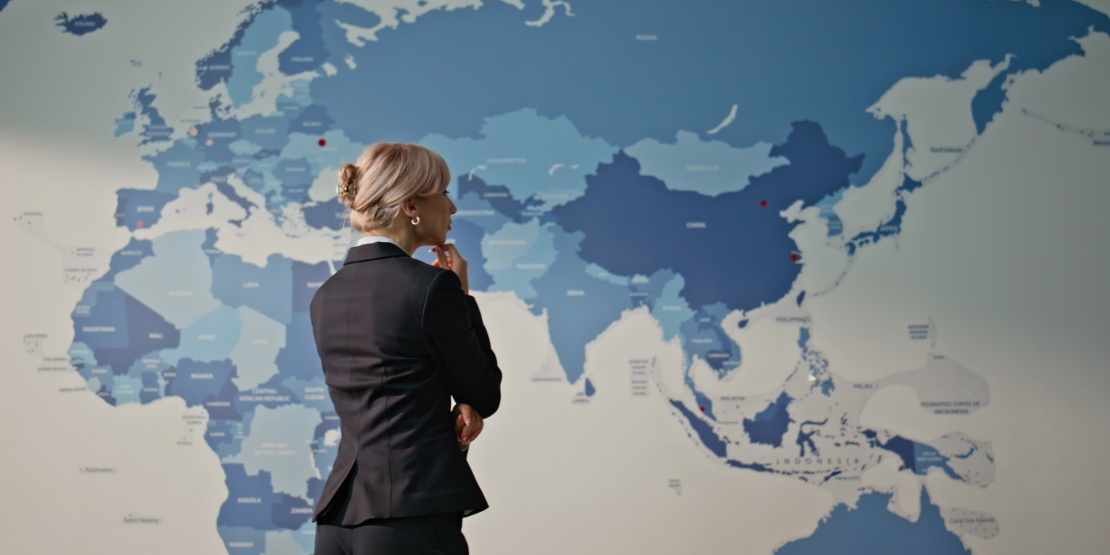In recent years, we seem to be entering a new cycle of globalisation. International cooperation is now weakened by geopolitical tensions. This is paving the way for what McKinsey & Company experts call "variable geometry" globalisation. Economic players are beginning to reconfigure their exchanges through geopolitical or geographical realignments. It's in this context that nearshoring is developing within global organisations.
From offshoring to nearshoring
For years, companies have relocated or outsourced their production or procurement activities thousands of miles away. These relocation strategies, commonly called offshoring, were generally motivated by cost savings and profitability logic. This is why they catalysed in countries where labour costs and material prices were lower, such as China, India, or Brazil.
However, this strategy also has its limitations: hidden costs, risk amplification, quality management, impact on the environment, cultural differences... More recently, multiple crises have shaken the supply chain and pushed businesses to reconsider their approach.
Today, the trend seems to be reversing, favouring a more regionalised approach. Many organisations are rethinking their value chains to bring their operations closer to a nearby country. On the procurement side, this is materialising through the development of dual sourcing strategies, with a greater proportion of local sources.
This is what is more generally called nearshoring. This approach involves transferring operations, services or processes to geographically close countries. It often means returning to one's continent of origin and/or moving closer to neighbouring or adjacent countries. This approach aims to reduce exposure to risks, get closer to markets and thus strengthen the resilience of the supply chain. According to the latest supply chain risk barometer conducted by Kyu, 43% of companies are considering relocating their sourcing closer to production.
Nearshoring, addressing supply chain challenges
In an increasingly fragmented world, trade is being reconfigured. Gita Gopinath, Deputy Managing Director of the IMF[1], explains: "Global economic ties are evolving in a way we haven't seen since the end of the Cold War... After years of shocks, including the COVID-19 pandemic and Russia's invasion of Ukraine, countries are reassessing their trading partners based on economic and national security concerns."
This phenomenon is exacerbated by generalised inflation, the rise of more protectionist policies, and new trade integrations. We can see this, for example, in the surge in trade restrictions or the increase in customs duties. All these factors risk driving production and raw material costs higher for certain sectors.
Added to this are company failures, which, according to Allianz Trade, have increased in four out of five countries, with most recording double-digit growth. "North America and Asia have both significantly contributed to the global rise in failures, with Western Europe remaining a key contributor despite a more moderate increase. In the end, 474 large companies went bankrupt worldwide last year, a record figure for the past decade that reminds us of the importance for companies to closely monitor the risk of domino effects on suppliers and subcontractors," explains Maxime Lemerle, Head of Insolvency Research at Allianz Trade[2].
Also, logistics failures have disrupted global supply chains. At sea, shipping times have lengthened by an average of 14 days from Asia to Europe over the previous year. This has had repercussions on fuel costs, wages, insurance, greenhouse gas emissions... We must also mention the social movements in American and European ports, as well as the shortage of labour in road transport, which disrupt the flow of goods.
In this context of uncertainty, nearshoring appears as a solution to recalibrate and consolidate the supply chain. As Richard Howells, Vice President of ERP, Finance and Digital Supply Chain Solution Management for SAP[3], points out: "For business leaders who anticipate the effects of tariffs and trade wars, conflicts in eastern Europe and the Middle East, factory shutdowns, logjammed ports, and demand volatility, the appeal of nearshoring and onshoring has crystallised."
Nearshoring to strengthen the supply chain
First, nearshoring can also help shorten supply chains. Because distances are reduced, deliveries are faster, less expensive and have a lower impact on the environment. This also allows companies to better control their supply chains, thus making them more resilient.
This geographical and cultural proximity also facilitates communication. Often, time zones are similar or identical. This streamlines exchanges and boosts the responsiveness of the various stakeholders. In addition, labour and trade regulations are often similar in neighbouring countries.
Nearshoring is even more beneficial when trade agreements are concluded with neighbouring countries. This promises fewer trade barriers, simplified procedures, harmonised regulations... All advantages that help improve and secure the logistics chain.
Douglas Gill, Export Sales Manager for the Manutan Group, adds: "Businesses have every interest in establishing partnerships with key suppliers locally established in these strategic zones. This presence facilitates alignment between local specificities and group standards. Beyond reinforcing their competitiveness, this enables them to better manage risks related to supply chain disruptions and geopolitical tensions."
In a global context marked by uncertainty, geopolitical tensions and logistics disruptions, nearshoring is emerging as an effective solution to secure and boost the supply chain, despite potential future crises. This strategy combines operational simplicity and profitability, paving the way for a robust, agile and sustainable supply chain.
[1] Gita Gopinath, (Deputy Managing Director of the IMF), 6th supply chain risk barometer - The supply chain and the challenge of deglobalisation, Kyu.
[2] Maxime Lemerle, (Head of Insolvency Research at Allianz Trade), Will global business insolvencies ever stop rising? 18 March 2015, Allianz [https://www.allianz-trade.com/en_global/news-insights/news/insolvency-report-2025.html]
[3] Richard Howells, (Vice President of ERP, Finance and Digital Supply Chain Solution Management for SAP), Evaluating nearshoring? Here are five realities, 24 October 2024, SAP, [https://www.sap.com/resources/five-realities-about-nearshoring-and-reshoring-strategies]








